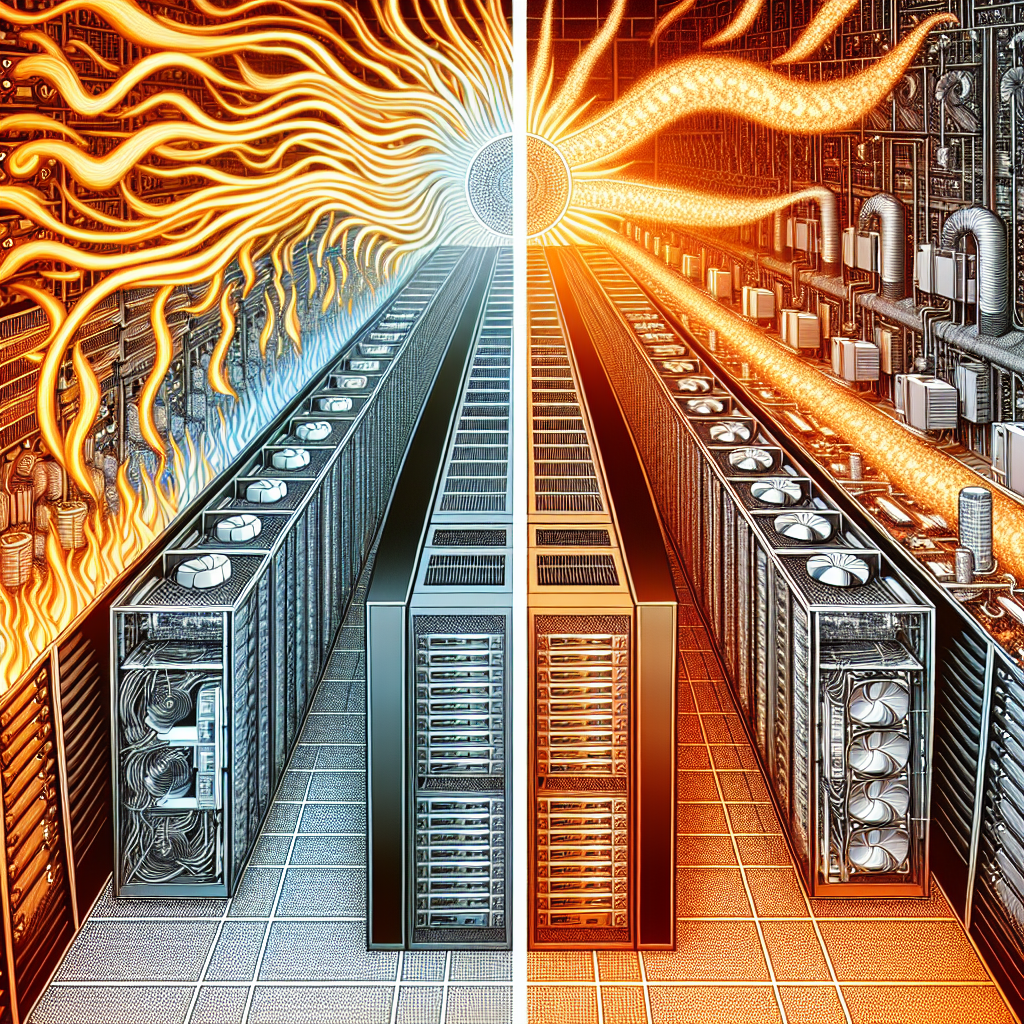Fix today. Protect forever.
Secure your devices with the #1 malware removal and protection software
Data centers play a crucial role in today’s digital world, serving as the backbone of the internet and housing the servers, storage, and networking equipment that keep businesses running smoothly. However, one of the biggest challenges faced by data centers is keeping all of that equipment cool. Data center cooling is essential to prevent overheating and ensure optimal performance of the hardware, but it can be a complex and costly endeavor. In this article, we will explore some of the challenges faced by data center cooling and discuss potential solutions.
One of the main challenges in data center cooling is the sheer amount of heat generated by the servers and other equipment. As these devices work, they produce heat that must be dissipated in order to prevent damage and maintain efficiency. Traditional cooling methods, such as air conditioning, can be effective but are often inefficient and costly to operate. Additionally, as data centers continue to grow in size and complexity, the demand for cooling solutions that can keep up with the increasing heat load becomes ever more pressing.
Another challenge is the need to maintain precise temperature and humidity levels within the data center. Fluctuations in temperature and humidity can lead to equipment failure and data loss, making it essential to keep these factors in check at all times. Achieving this level of control can be difficult, especially in larger data centers where maintaining uniform conditions throughout the facility can be a challenge.
One potential solution to the challenges of data center cooling is the use of advanced cooling technologies, such as liquid cooling and containment systems. Liquid cooling involves circulating a coolant through the servers and other equipment to absorb heat more efficiently than air cooling. This can help to reduce energy consumption and improve cooling efficiency, especially in high-density data centers where air cooling may not be sufficient. Containment systems, such as hot and cold aisle containment, help to isolate the hot and cold air within the data center, preventing them from mixing and improving overall cooling effectiveness.
Another solution is the use of intelligent cooling management systems that monitor and adjust cooling levels in real-time based on the heat load and environmental conditions within the data center. These systems can help to optimize cooling efficiency and reduce energy consumption by only cooling the areas that need it, rather than running the entire cooling system at full capacity all the time.
In conclusion, data center cooling presents a number of challenges that must be addressed in order to ensure the reliable operation of critical IT infrastructure. By implementing advanced cooling technologies and intelligent cooling management systems, data center operators can improve efficiency, reduce costs, and ensure that their equipment remains cool and operational at all times. As data centers continue to grow in size and complexity, finding innovative solutions to the challenges of cooling will be essential to meeting the demands of the digital age.
Fix today. Protect forever.
Secure your devices with the #1 malware removal and protection software

Leave a Reply
You must be logged in to post a comment.